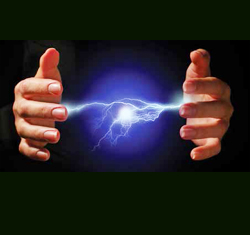
This 10 dB of headroom also works out for loudspeaker transducers, as they generally can handle peaks 6 to 10 dB above their long-term average power-handling ratings.
Just remember that an AES average power rating is a 2-hour rating. When you employ 10 dB of limiting and can raise the program level 10 dB, that’s 10 times the power to the drivers. If the loudspeaker catches fire just after 120 minutes of hard use with only 10 dB of headroom, it still passes the stated rating.
Touring sound companies often use the IEC 268-5 Power Handling Capacity standard as a limit to the average power delivered to their loudspeakers. The reason is that it’s 100-hour rating.
However, even with only 10 dB of headroom, a single 500-watt loudspeaker would require a 5000-watt amplifier channel to use the loudspeaker to its fullest average power capacity. Now budget really becomes relevant, doesn’t it!
Current class D amplifiers and other derived topologies with switching power supplies, etc., finally present units that are designed for program material rather than sine wave power. They’re light, can produce high peaks, generate little heat, and are very efficient, but with more conservative long-term average power ratings are more in line with program requirements.
The newer topologies don’t have high long-term average ratings like the old class A/B amplifiers did. Understand that those big numbers of watts we like to see in amplifier specifications are now short-term instantaneous-peak or burst ratings more akin to the car stereo ratings.
The Bottleneck
Here’s one last thing about watts. Remember Ohm’s Law? With a standard AC electrical plug, all we can get out of a 15-amp wall receptacle at 120 Volts RMS is 1,800 watts (P = V x I). Now multiply that by a roughly 75-to-80 percent class D amplifier efficiency, and only about 1,400 watts per circuit of sine wave can be delivered to a loudspeaker.
So anyone that plugs in their Belchfire 8000 power amplifier to a standard wall socket, connects the amp to their loudspeakers, turns it up to clipping, and claims they’re listening to 8,000 watts of ear-crushing power is suffering from “consumerdom suckeritus.” (I’ve filed a trademark on this terminology.)
That is, unless it’s like my sound room, which is wired with multiple 20 or 30-amp circuit breakers accompanied by those odd, high-power AC outlets and plugs. How many watts do the amplifiers in my system supply? As many as my budget allows.
